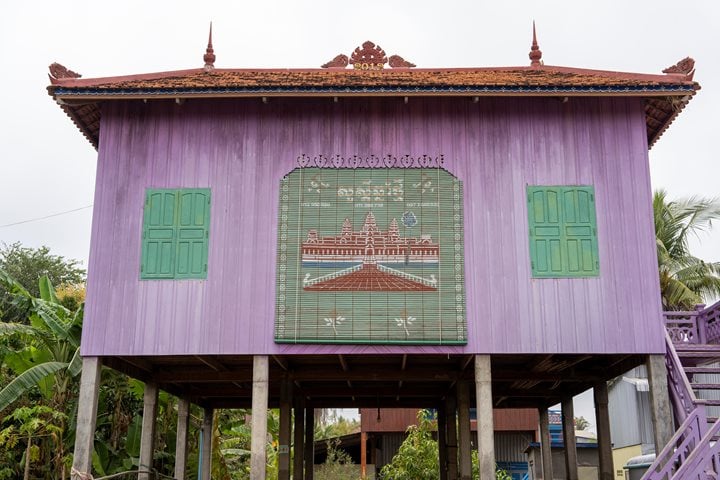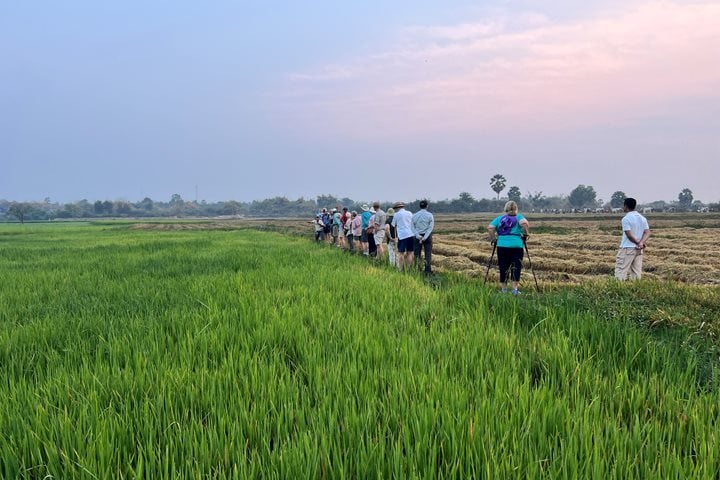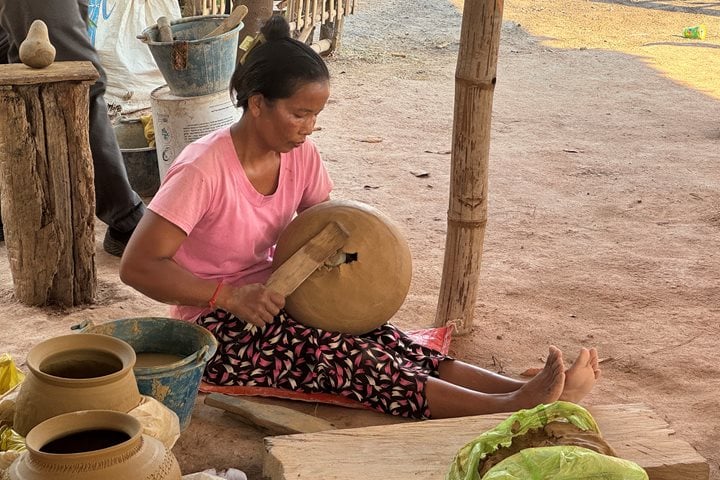Our last day aboard Jahan began leisurely as we went ashore at the small village of Angkor Ban. It is an ideal insight into rural Cambodia, with its traditional wooden houses, some of which extend past a century or more in age. As we walk through the narrow laneways meandering between houses and yards, we encounter farmers processing their peanut crop, a variety fruit trees, and farm animals large and small. All the while a loudspeaker echoes out across the town as a wedding is taking place. We also take time to visit the local market before departing. Back aboard Jahan, monks from the local monastery join us, blessing the ship, and christening our departure in a ceremony of chants that create an ambience that is other-worldly and nothing less.
In the afternoon we board local buses and drive through the city of Kampong Cham. This provincial town features buildings from the colonial period, royal residence, as well as more recent architecture and development. While much smaller than the nation’s capital, Kampong Cham is clearly a city that rides steadily upon the wave of prosperity. On the other side of town, we come to Wat Nokor, an Angkorian temple complex that still sees use today from worshipers. Built in the late 12th century during the reign of Jayavarman VII (a name commonly attributed to some of the greatest Angkor monuments), Wat Nokor was modified in the 16th century during the transition to Theravada Buddhism. This involved the installation of a stupa in place of the central tower and the construction of vihear (the congregation hall of a Buddhist monastery) within the complex. Another symbol of this province’s wealth over time is the gold leaf used to decorate the temple’s central bas-relief.
After returning to Jahan, we cast off for an evening cruise, taking in the cool river breeze as we come together to bid farewell to the ship’s crew. Today has been another fascinating insight into the daily life and history of the Khmer people and Cambodia.







